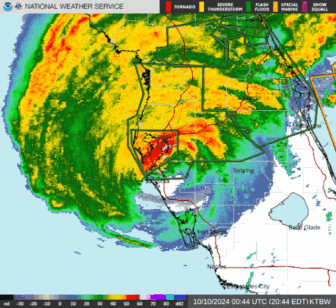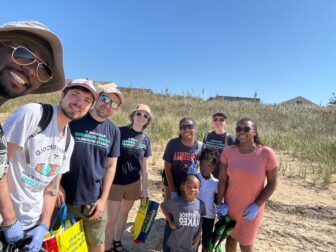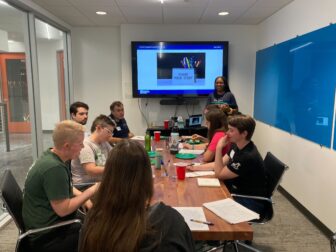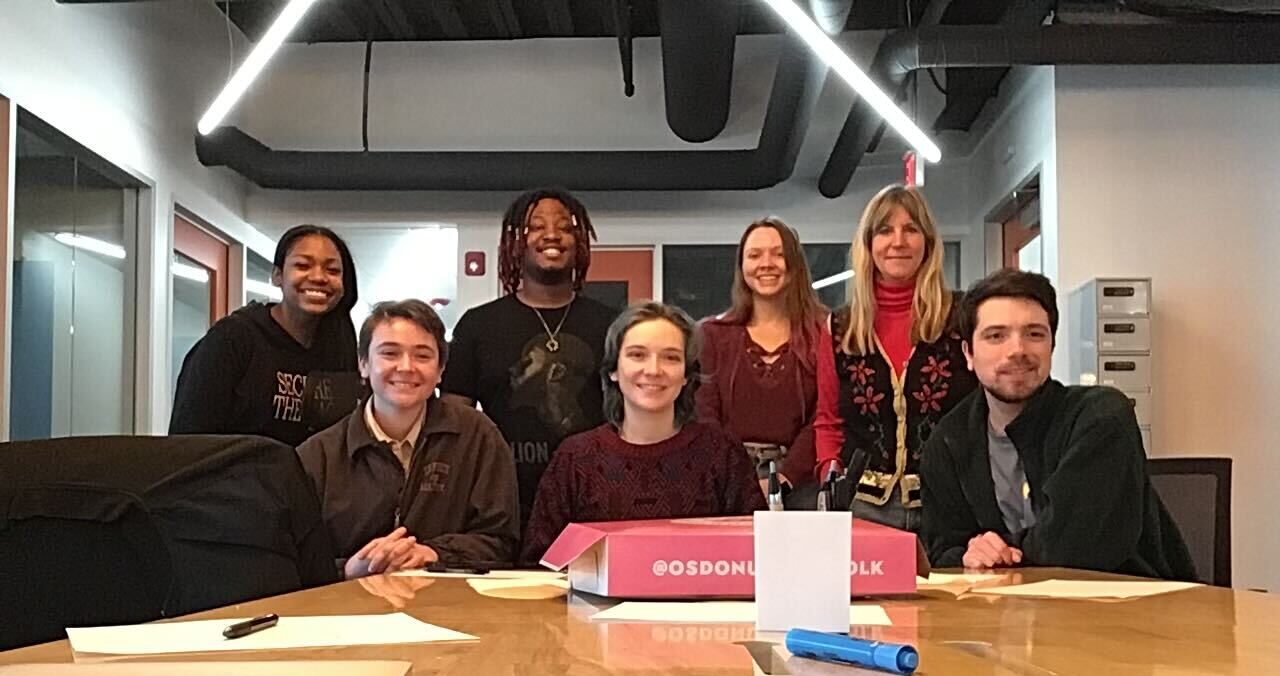Facing the Fury of Nature, One Floridian Now Living in Norfolk Finds Purpose in the Fight Against Climate Change with CCAN
A blog by Britt Flanagan, member of CCAN’S Hampton Roads 757 Climate Action Team (CAT)
Growing up on the Space Coast of Florida, I was no stranger to hurricanes, but this one was different.

I knew 2024 would be a record season. Weather forecasters were chattering about the potential danger well before it started. Still, I wasn’t prepared. I was caught off guard by the sheer devastation of Hurricane Helene in September 2024. Our region suffered $200 billion in infrastructure damages…230 deaths, leaving the unhealable wound of grief in its wake. So when the next storm – Hurricane Milton – reared its head just two weeks later, growing in strength and generating a path directly at my family back home, a special kind of desperate anxiety seized my heart.
Are they prepared? Will they know when to leave? What about my family members who can’t evacuate? How do you grapple with a deadly, uncontrollable force barreling its way to your hometown filled with those you love? Hours dragged on as we waited for impact, flashbacks of Hurricane Helene’s destruction on our minds. How can this season be so severe? What do we have to look forward to in the future? Will things only get worse?
After hours of checking the weather for updates and sending messages to my family to check up on their preparations, the storm finally hit. I remember being glued to my laptop at work, refreshing the weather page as it approached Tampa where it would cross the state and hit the East Coast.
By the time it reached my family, it was a Category 1 hurricane: something they were capable of handling. An exhausted relief washed over me when I heard that everyone was okay the following morning. Still, I was left grappling with that sense of anxiety.
This was a special kind of anxiety that came from a total lack of control. My family either wouldn’t or couldn’t evacuate. A huge devastating storm caused by a force I didn’t know how to grapple with: Climate Change. With climate change’s current trajectory, I’ll likely have to face this same situation again. What does someone do with that? Do they give in? Resign to fear? Hope the next storm downgrades just before it hits like Milton did? How can someone fight a force as big as climate change?

My answer came at a concert of all places. There, in the lobby, I stumbled across something I was not expecting. Two bright-eyed, inviting individuals stood behind a table draped in blue cloth proudly sporting a logo for CCAN: Chesapeake Climate Action Network. I remember standing off to the side, tapping on my sibling’s shoulder, and pointing eagerly at the table. A flurry of excitement (and admittedly a surge of social anxiety) hit me. Could this be it? Could it finally be a chance to chip away at the ever-present feeling of hopelessness? Leianis, the Hampton Roads Organizer for CCAN, greeted us warmly and, seeing the enthusiasm in our eyes, showed us how we could sign up for updates.
Before we knew it, we were seated beneath a gazebo in Virginia Beach, with dirt on our hands as we built “seed bombs,” small, packed balls (or, in my case, stars) of fertilizer filled with seeds of native Virginian flowers. There I learned that CCAN’s Hampton Roads team was just getting its feet under them and were on their way to an official team launch. Something I had the honor and impeccable timing to be a part of! For the first time, I was surrounded by like-minded people who wanted to fight for the environment and now we had something to pour that energy into.

A few months later, we were in Norfolk. Many now-familiar faces surrounded my sibling and me. This was the official team launch: something new and exciting that can do so much good for our region! It was a truly collaborative experience. Leianis expertly led our group through discussions, ensuring everyone had their chance to speak. There was much deliberation as we all worked to find common ground. We each drafted a statement we thought would best reflect the team’s unique ideas in a cohesive way. Then, under the guidance of Leianis and Zander, we crafted a shared purpose statement, (or as I tend to call it, a mission statement). There was surprising power and pride in that little statement. It made this team and its potential finally start to feel real. Now we had something shared, something we crafted together, something we could rally behind. I remember leaving that meeting, feeling an exciting buzz in the air.
Our team continues to grow and develop structure. We’re each coming into our own: seeing how our little puzzle piece fits into the bigger picture of the team. There’s a flurry of ideas and potential as we pave our way forward, and for the first time in a long time, I’ve been struck with a new special kind of feeling: hope.
This fight will be a long one. There will be wins. There will be losses. I may have to face my fair share of scary storms along the way. The difference this time is I will be fighting back, and I won’t be alone.
A blog by Britt Flanagan, member of CCAN’S Hampton Roads 757 Climate Action Team (CAT).


